britinjapan
New Member
I know the focal length will increase by the crop factor, but what happens to the F stop?
Just a small clarification, the focal length of a lens NEVER changes. Is a physical parameter and is only one. When shooting with a smaller sensor, the crop factor appears and this generates the "equivalent" focal length in a FF system that will produce the same Field of View.britinjapan":2pe9heni said:I know the focal length will increase by the crop factor, but what happens to the F stop?
Well, although I think I understand what you mean, it really does. CoC is reduced by the same amount that the focal length is increased to find the "equivalent" focal length, this is, by the crop factor. This is why smaller sensor implies smaller DOF.rondo":1vo2uw80 said:The sensor size has nothing to do with depth of field.
Christian, this phrase is not precise. Should say LENSOR and not SENSOR. Tabelle 4 includes both, the brennweite (focal length) and zerstreuungskreis (circle of confusion), so it is an evaluation of how the DOF increases when we go from a complete 50mm/FF to a 9.2mm/Compact system (which varies focal length and CoC) that is what I call "final effect in a compact system" because the focal length DOF increase is stronger than CoC decrease effect of the DOF.olyz":1vo2uw80 said:Hi rondo, the translation of Tabelle 4 "Mit abnehmender Sensorgröße..." is:
With decreasing sensor size the DOF (Schärfentiefe) is increasing rapidly.

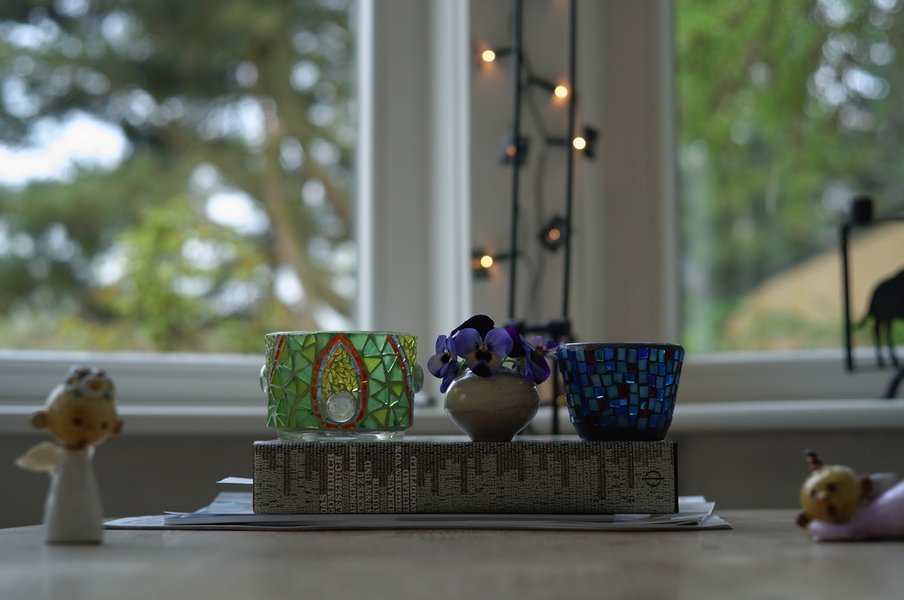

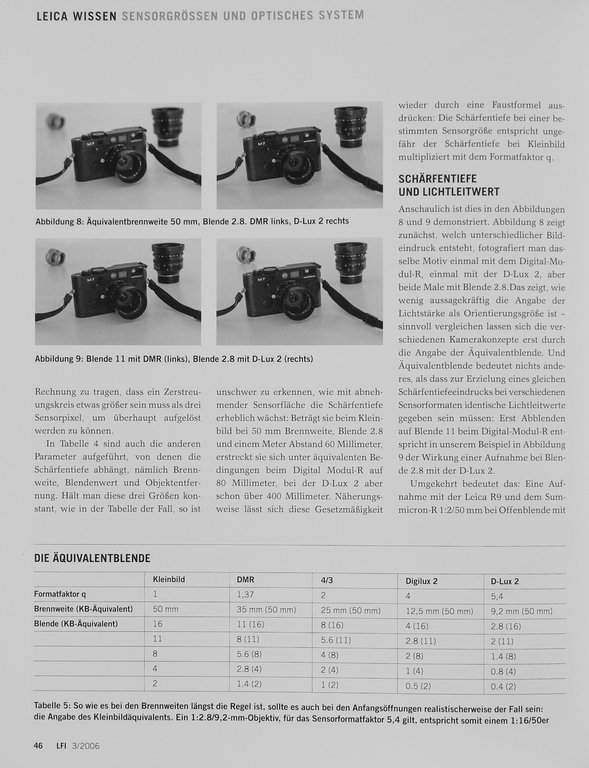
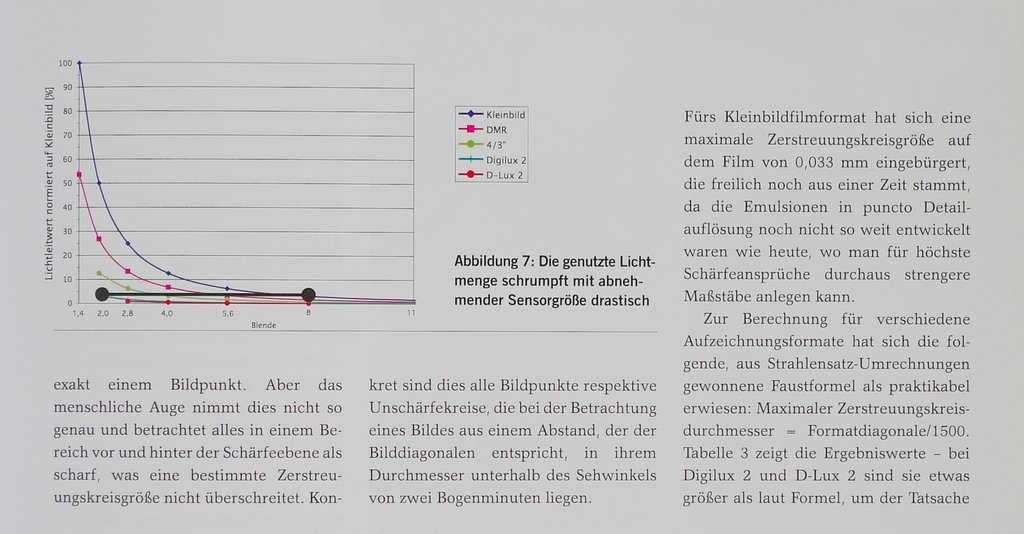


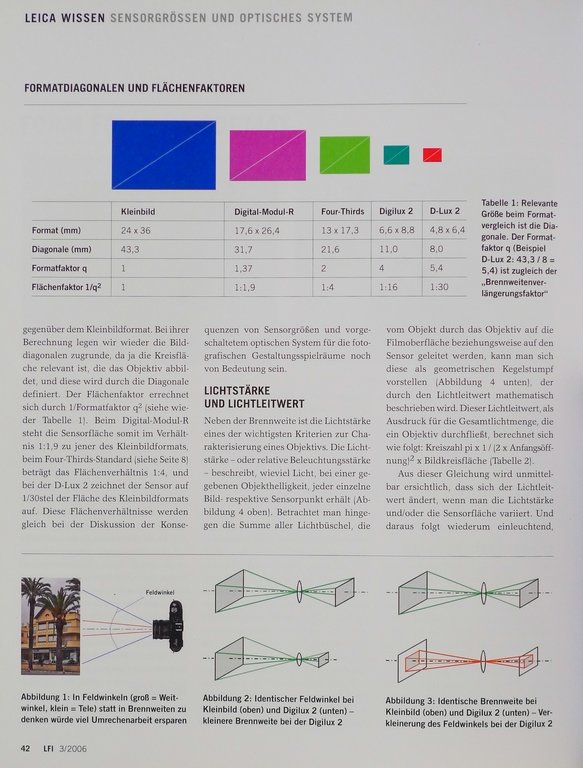
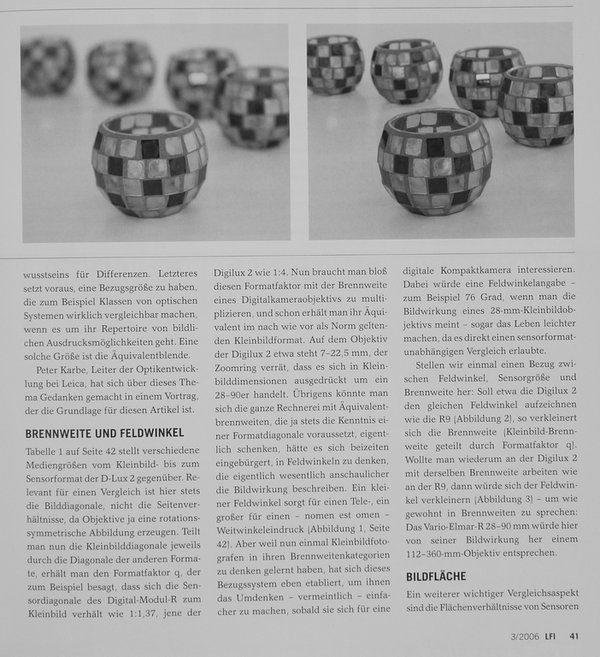

Again your phrase is not really complete and could induce to some misunderstanding, it should say:olyz":2o10cvoj said:... and 2 photos with different sensor at f 2,8 / distance 1 meter...